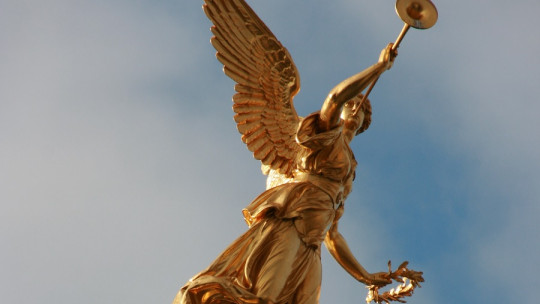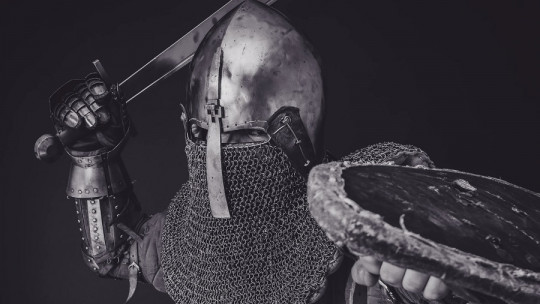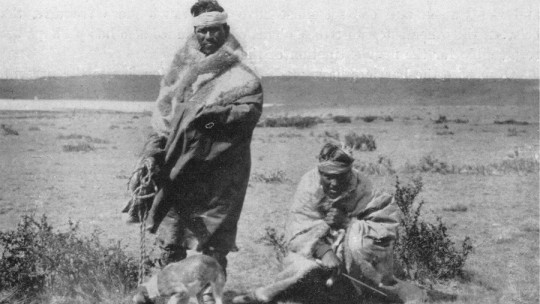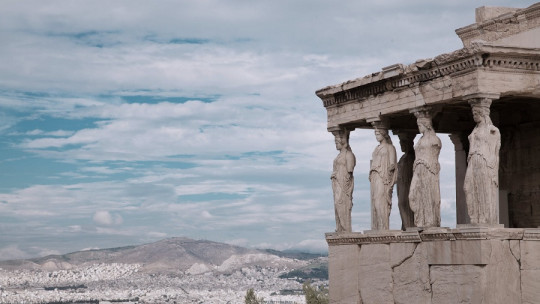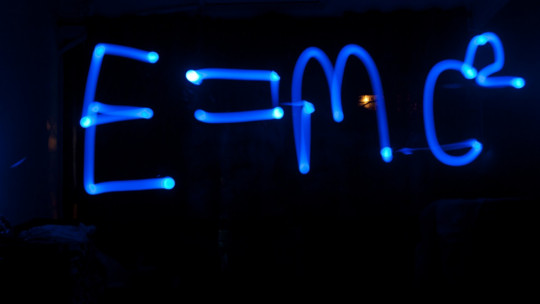Art history has not always existed We explain ourselves. Like most disciplines, the branch of the Humanities that studies art is relatively recent. Of course, of all the humanistic disciplines, it is perhaps the oldest, along with historical science.
When did art history begin to be studied? How did it come about? When did the first studies on the subject begin to be created? In this article we briefly summarize the trajectory of art history studies and tell you what they are currently based on.
What is art history?
As its own nomenclature states, This branch of the humanities focuses on the study of works of art and artistic manifestations within their historical and stylistic context As we have pointed out in the introduction, this discipline is relatively recent, since it did not begin to form until the time of the Enlightenment, that is, in the 18th century; yes, with some previous antecedents.
What object does art history cover? Any human manifestation that has a purpose that is either aesthetic or expressive (for example, of a moral or religious idea), or both. The discipline therefore covers from the first artistic manifestations of the Paleolithic (for example, the Altamira paintings) to the most modern expressions and forms of art.
Although the concept “art” is currently very broad and includes areas such as cinema or bodypainting, art history studies are usually limited to painting, sculpture and architecture. It is usual, however, that within the career that studies these disciplines some subjects are included (generally, optional) that cover other artistic manifestations, in order to have a much more complete panorama.
The origin of art history as a discipline
It can be said that the beginning of artistic studies came with the Renaissance During the medieval centuries, there was no concept of “art” or “artist” or, rather, they were not related to the production of artistic works. We explain ourselves.
In the Middle Ages, there were studies of the so-called “liberal arts”, which had nothing to do with what we consider today a career in fine arts or art history. On the contrary. “Art” was strictly related to the intellect, never to manual production, so the so-called liberal arts had to do exclusively with the mind.
The concept of liberal arts, however, is not the exclusive heritage of the Middle Ages. The idea came from classical antiquity, and was a way to differentiate the activity of scholars and wise men from that of artisans and slaves. The liberal arts, as their name indicates, “dignified” man and, therefore, they were only intended for free men and of a certain status. This aversion towards manual work (which included painting and sculpture) expanded until modern times and, in fact, only the end of the Ancien Regime managed to modify this idea.
But what, then, were the “arts” in the Middle Ages? Augustine of Hippo himself lists, in the 4th century, grammar, rhetoric, dialectic and astronomy, among others. However, it is Marciano Capella who, a century later, establishes which arts are to be considered “liberal”; on the one hand, grammar, rhetoric and dialectic formed the Trivium, and, on the other, geometry, astronomy, arithmetic and music would configure the Quadrivium. As we can see, none of these disciplines have anything to do with our modern concept of “art”.
And what was happening with the activities that we would call “art”, and with the people who would currently be “artists”? We have already said it; They were mere artisan workers, since they carried out their activity with their hands and not with their intellect. In the Middle Ages, nothing differentiated a shoemaker from a fresco painter , For example; both were specialist workers in their own field. That is the main reason why no painter or sculptor of the Middle Ages signs his works. Did a shoemaker sign the shoes he made?
And, of course, no learned man (neither clerics nor nobles) “stooped” to the craft of painting or sculpting, with the exception, of course, of the miniatures of medieval codices which, being inserted in scholarly texts, and illustrate important passages, did not fall into the classification of “manual craft.”
The path towards the autonomy of art
We have already commented that the Renaissance constitutes a turning point in the trajectory of art history studies. And this is so because, during this time, the artist begins to acquire a different status than the one he had enjoyed in previous centuries. The artist is no longer just the mere craftsman who creates with his hands (almost as if it were a machine), but he also imbues his work with intellectual inspiration
León Battista Alberti (1404-1472) and his treatises on the Roman Vitruvius (1st century BC) have a great influence on the process of “intellectualization” of art and, therefore, on its separation from other manual works. From then on (at least in Italy, since in other latitudes it will be a more laborious process), and with the support of the Medici family of Florence, painting, sculpture and architecture began to prevail as intellectual activities, at the same time. level than the other medieval “liberal arts.”
Giorgio Vasari (1511-1574), in his work The lives of the most excellent Italian architects, painters and sculptors, presents the biography and work of some of the most outstanding artists of their time or the immediately preceding time; among them, the brilliant Michelangelo Buonarrotti (1475-1564). The path towards the intellectualization of art and, above all, towards its autonomy, has already been traced, and it will be in the 18th century, the Age of Enlightenment, when its study and codification will begin.
The Enlightenment and the beginning of the Theory of Art
Professor Valeriano Bozal is undoubtedly correct in stating that, parallel to the autonomy that art began to enjoy in the 18th century, we also find the autonomy of scientific research. In other words; both science and art are “freed” from the weight of ideological, religious and moral factors, and the independence of artistic creation begins to prevail Obviously, this supposed “liberation” is not absolute at all, since each artistic manifestation is necessarily a child of its time, not even in a very small part.
Be that as it may, it is in the Enlightenment when art begins to be theorized. Three related disciplines thus emerge: art history itself, art criticism and aesthetics. The first was “inaugurated” with the publication, in 1764, of the volume History of art in ancient times (as it could not be otherwise in an era obsessed with the classic), while the pillar works of the other two disciplines are, respectively, The Halls (1759-81) by Denis Diderot and the Esthetic (1750-58), by Alexander G. Baumgarten, as wonderfully collected by Gonzalo M. Borrás Gualls in his Theory of Art I (see bibliography).
What is art history currently studying?
It is from the 18th century onwards that these three paths in terms of artistic studies differ and separate , despite continuing to feed each other. Thus, we can say that aesthetics, as an autonomous discipline, studies art related to its qualities, namely: beauty, ugliness, proportion, etc. On the other hand, art criticism inevitably expresses a value judgment, since it judges the “quality” of a piece in relation to many variables.
Art history, on the other hand, focuses on the evolution of artistic expression in relation to different historical, social and cultural contexts. It is, therefore, closely linked to historical science, and both nourish and complement each other. On the other hand, art history also takes into account different artists and their artistic creations, not only from a merely biographical perspective, but also in relation to their own context.
One of the innovations that has been occurring with increasing force within this discipline is the inclusion of artistic expression from other latitudes. The history of art, as “codified” by the Enlightenment, was always linked to Western art; Fortunately, nowadays artistic studies have opened their sights and are increasingly including studies of the artistic manifestations of other cultures.



